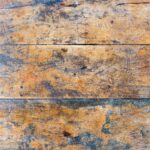Can mold get through plastic? Mold is a common concern for many homeowners, and when it comes to preventing its growth, people often wonder if mold can penetrate through plastic materials. Plastic is widely used for various applications, including containment and storage. In this blog, we will address the question: Can mold get through plastic? We will debunk common myths, provide a better understanding of mold behavior, and explore the effectiveness of plastic as a barrier against mold.

Understanding Mold and its Behavior
Before diving into the question at hand, it’s essential to understand the nature of mold. Mold is a type of fungi that reproduces through tiny spores, which are present in the air we breathe. These spores can settle on various surfaces and thrive under the right conditions, including moisture, warmth, and organic matter for nourishment. Mold growth typically occurs in damp environments with poor ventilation.
The Permeability of Plastic
Plastic is a non-porous material, meaning it does not have microscopic openings or pores like some other materials do. This characteristic gives plastic a reputation for being resistant to mold growth. Mold spores need a suitable environment to grow and multiply, such as organic materials like wood, fabric, or paper. Since plastic lacks organic matter, it does not provide a food source for mold, making it less susceptible to mold colonization.
However, it’s important to note that while plastic itself is not a source of food for mold, it can still trap moisture and create a favorable environment for mold growth if the conditions are right. For example, if plastic containers are used to store damp items or in areas with high humidity, condensation can form inside the container, promoting mold growth on the surfaces of the stored items.

Preventing Mold Growth on Plastic
Although mold growth on plastic is relatively uncommon, it is still possible under specific circumstances. To prevent mold growth on plastic materials, consider the following preventive measures:
- Proper ventilation: Ensure proper air circulation in storage areas and rooms with plastic materials to minimize moisture buildup.
- Keep plastic dry: Avoid storing wet or damp items in plastic containers. Wipe off excess moisture before sealing them.
- Regular cleaning: Regularly clean plastic surfaces with mild detergent and water to remove any dust, dirt, or organic matter that could provide a breeding ground for mold.
- Maintain optimal humidity levels: Use dehumidifiers or air conditioners to control humidity levels in your home, especially in areas prone to moisture, such as basements, bathrooms, or kitchens.
Conclusion
In conclusion on can mold get through plastic, while mold can grow on a wide range of materials, plastic is generally resistant to mold colonization due to its non-porous nature and lack of organic matter. However, plastic can still trap moisture, creating a conducive environment for mold growth if the conditions are favorable. Proper ventilation, moisture control, and regular cleaning are essential in preventing mold growth on plastic materials. Remember to address any underlying moisture issues and maintain a clean and dry environment to minimize the risk of mold growth, not just on plastic but throughout your home.








